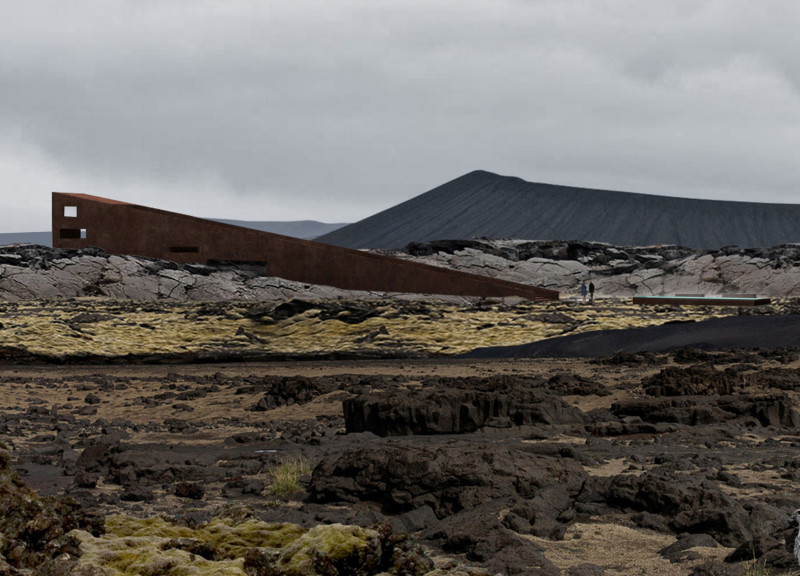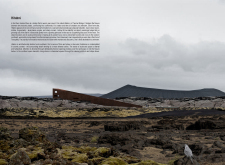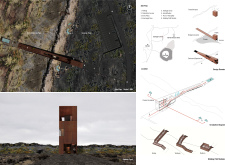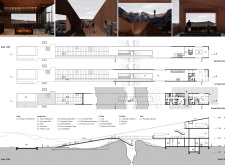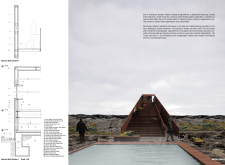5 key facts about this project
Hitabrú is located in Northern Iceland, serving as a bridge that connects two tectonic plates. The design merges functionality with a sculptural quality, inviting visitors to engage with the natural surroundings. Stretching from a high point on the eastern side down to a calm blue pool on the western side, the bridge reflects the unique landscape it inhabits. The overall design aims to blend the built structure with the rugged terrain, enhancing the experience of crossing from one side to the other.
Concept and Design
The concept behind Hitabrú draws from the geographic features surrounding it, emphasizing a connection between people and nature. The bridge's geometric planes and sharp angles mimic the natural contours of the landscape. This design approach allows Hitabrú to feel like an extension of the environment rather than a separate entity. Visitors are encouraged to explore and appreciate the interplay of nature and architecture as they make their way across the bridge.
Visitor Experience
Entering from the eastern side, visitors are welcomed by the warmth rising from the geothermal springs below. The steam envelops the bridge, adding a sense of atmosphere to the journey. Crossing from east to west becomes a sensory experience, enhanced by the natural beauty of the surroundings. On the western side, a warm dip in the Pool of Tranquility awaits, providing a moment of relaxation after the journey. The thoughtful design invites contemplation, encouraging visitors to engage more deeply with the landscape around them.
Structural Integrity
The bridge balances stability with the need for movement due to the tectonic activity of the area. An anchored tower on the eastern side ensures stability, while a sliding bearing connection on the western side allows for natural shifts in the earth. This engineering solution maintains the structure’s integrity while accommodating the dynamic landscape. The design illustrates a careful consideration of the environment and the forces that act upon it.
Materiality and Sustainability
Corten steel is used for its durability and ability to blend with the surrounding terrain. Additionally, thermoset resin girts create a thermal break, allowing the structure to expand and contract as needed. The design follows Passivhaus standards, featuring a geothermal heat pump for heating and a rainwater collection system that underscores a commitment to sustainability. These choices contribute to an overall design that respects and responds to the natural environment.
The bridge offers a unique blend of form and function, providing an experience that draws visitors into the landscape while fostering a deeper connection to the distinct features of Northern Iceland.


